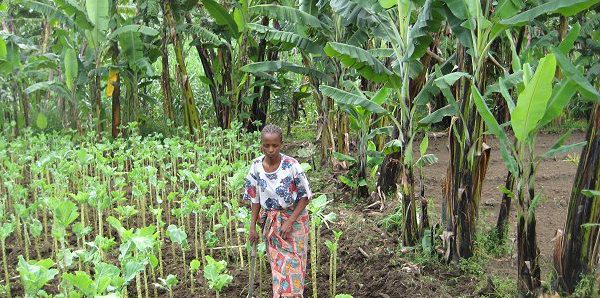Researchers diversify Kenyan greens to improve nutrition
By Zoe Forster

When Cornell horticulture professor Phillip Griffiths launched a multidisciplinary project in sub-Saharan Africa in 2012, he was not surprised to find that Kenyan communities are just as picky about their food as most Americans.
What sets the region apart is that children and adults are frequently undernourished, with micronutrient deficiencies caused by a lack of vitamin A and iron-rich foods. Griffiths, a vegetable breeder, was particularly interested in East Africa’s staple fresh vegetable: a type of kale called sukuma wiki, which is filled with nutrients and commonly grown by subsistence farmers. But like many cruciferous vegetables, it is highly susceptible to black rot.
Black rot is a bacterial infection that causes V-shaped lesions on plants’ leaves, making them unmarketable. Black rot damage devastates smallholder farmers who rely on the sukuma wiki crop and also undercuts local nutrition and food security. The Cornell team carried out field trials with the goal of developing more diversified, culturally acceptable sukuma wiki varieties that can resist black rot.
The team’s breeding process crosses sukuma wiki with related but more resistant vegetables like cabbage. The challenge is that local appetites favor the traditional vegetable, so cooks and consumers may not be receptive to new types.
“We’ve been able to make the first steps in selecting and testing materials with resistance to black rot in a sukuma wiki type of plant,” Griffiths said, “but there is still work that needs to be undertaken with breeding before these varieties would be acceptable in African communities, because of the color, appearance and eating quality.
“Farmers in rural communities were a little suspicious of some of the control kale varieties like Tuscan kale, as they look so different from what they are used to growing.”
Kenyans prefer sukuma wiki to have a dark green color and sweet taste; they cook it in oil with a little salt for only a few minutes. Griffiths and his team found it helpful to get feedback on which related greens people prefer among different kale and collard varieties.
It took Griffiths and his team three years to complete a one-year Academic Venture Fund project. Breeding takes time, Griffiths said. As the scientists head back to the lab, they have new information on the plants that most effectively resist black rot, as well as signs of hope for a new leafy green that will please local farmers and the communities they feed.
Vitamin A is essential for good health, particularly for maintaining a healthy immune system, vision and reproduction.
“The importance of it is clear,” Griffiths said. “Leafy greens are the major source of vitamin A in less developed areas.”
Zoe Forster ’17 is an intern at the Atkinson Center for a Sustainable Future.
Media Contact
Get Cornell news delivered right to your inbox.
Subscribe